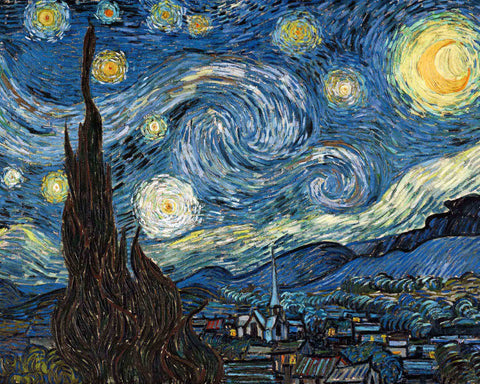"The Circle in Art: Exploring Kandinsky's Visionary Perspective"
Introduction:
In the realm of modern art, few shapes have stirred as much intrigue and interpretation as the circle. This simple yet profound shape has been a subject of fascination for many artists, but it was Wassily Kandinsky, a pioneer of abstract art, who truly elevated the circle to a symbol of artistic revolution. Kandinsky's exploration of geometric forms, particularly the circle, was not just a stylistic choice but a profound philosophical statement. In this post, we delve into Kandinsky's belief in the significance of circles in art and how this belief shaped his work and legacy.
The Essence of the Circle in Kandinsky's Work:
Kandinsky's journey into abstraction is marked by his use of simple geometric shapes, with the circle taking a prominent role. To him, the circle was more than just a shape; it was a representation of the inner and outer realities. He saw it as a cosmic symbol that represented the spiritual realm, an element that could transcend the physical world and connect with the deeper, more profound aspects of human experience.
In his compositions, circles often appear as vibrant, pulsating entities, sometimes solitary and other times in groups, creating a sense of movement and dynamism. This use of the circle was Kandinsky's way of exploring the relationship between form and color, and their ability to evoke emotional responses from the viewer.
Philosophical Underpinnings:
Kandinsky's attraction to circles was deeply rooted in his spiritual and philosophical beliefs. He was influenced by theosophy and anthroposophy, which emphasized the connection between the spiritual and material worlds. The circle, in its endlessness, was a perfect symbol for this interconnectedness and the eternal nature of the soul.
Moreover, Kandinsky believed in the synesthetic potential of art – the ability to engage multiple senses simultaneously. In his view, visual elements like circles could produce aural sensations, linking sight and sound in a harmonious symphony. He often related circles to the rhythmic sounds of music, which he considered the highest form of art.
Impact on Abstract Art:
Kandinsky's use of the circle challenged traditional notions of art. It wasn't just a departure from the representation of physical reality, but it also suggested that shapes and colors could be used to convey emotions and spiritual truths. This idea was revolutionary and laid the groundwork for the development of abstract art.
His work encouraged artists to think beyond the limits of conventional subject matter and to explore the intrinsic properties of shapes and colors. The circle, in Kandinsky's work, became a symbol of this new frontier in art, where the emotional and spiritual significance was given precedence over physical accuracy.
Conclusion:
Wassily Kandinsky's belief in the power of the circle as an artistic and spiritual symbol marked a significant turning point in the history of art. His visionary perspective opened up new avenues for expression and interpretation, allowing artists to communicate on a more profound, emotional level. Kandinsky's circles are not just elements of design; they are portals to a deeper understanding of the human spirit and the universe. As we continue to explore the vast landscape of art, Kandinsky's circles serve as a reminder of the limitless possibilities of abstract expression.
Take a look at some of our Kandinsky inspired art!







Comments (0)
There are no comments for this article. Be the first one to leave a message!